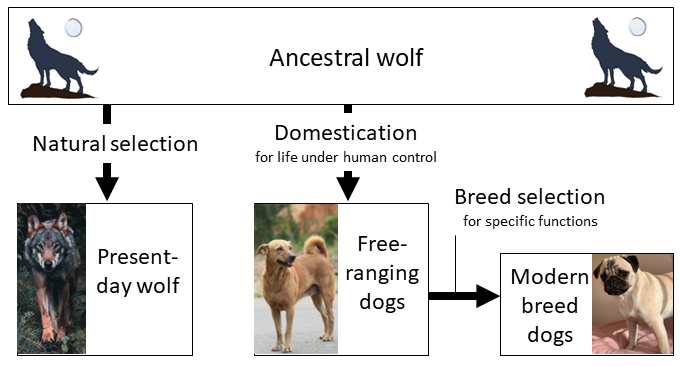Background


The Domestication Syndrome was first observed by Darwin as this weird phenomenon wherein domesticated species seem to develop an linked set of morphological, physiological and behavioural traits throughout the domestication process that differentiates them from their wild ancestors.
Even though that hypothesis was established more than 150 years ago, there are still a lot of unanswered questions about the definition, correlation, and emergence of those traits. Even in dogs, the longest domesticated species and our closest non-human companion, the evidence is mixed.
All of this has spurred a lot of criticism about how the idea has been explored until now:
1) the tests used so far might not have been ideally suited since they did not explore the traits directly and/or only looked at a few of them instead of the entire syndrome.
2) those tests have mainly tested modern breed animals in which the domestication syndrome traits might have become decoupled again through the directed modern breed selection.
Studying animals that pre-date modern breed selection might thus be a better study subject to understand the mechanics of domestication process. Free-ranging dogs might pose an ideal candidate for that. Not only do they genetically pre-date the modern breed selection, they also live a scavenger lifestyle in human environments simlar to the the initially domesticated dogs, and they make up 75% of the global dog population. Despite all those merits, tests on free-ranging dogs have only scarcely been conducted and there is not much known about the possibility to study them in long test batteries and the reliability of such tests.

Aims
The aims of my thesis project were therefore to address both those points:
- Develop and pilot a novel Domestication Syndrome test battery that can be used in free-ranging dogs to assess the domestication syndrome traits and further traits hypothesized to be important in the domestication of dogs.
- With a focus on the behavioural aspects, assess the test battery’s:
a) Feasibility
b) Coding reliability (i.e., inter- and intra-rater reliability)
c) Test-retest reliability (i.e., the test’s ability to capture the stable behavioural target traits)